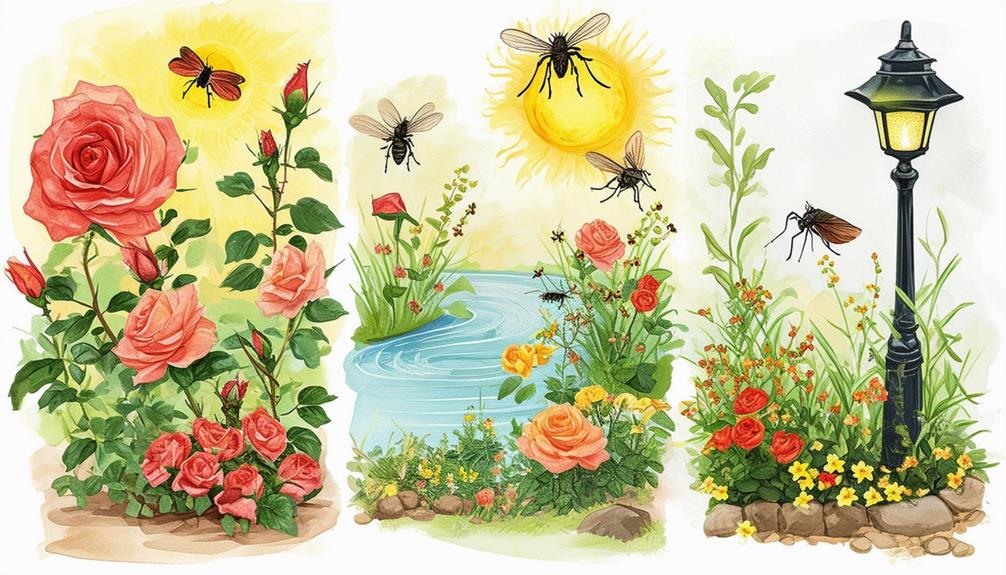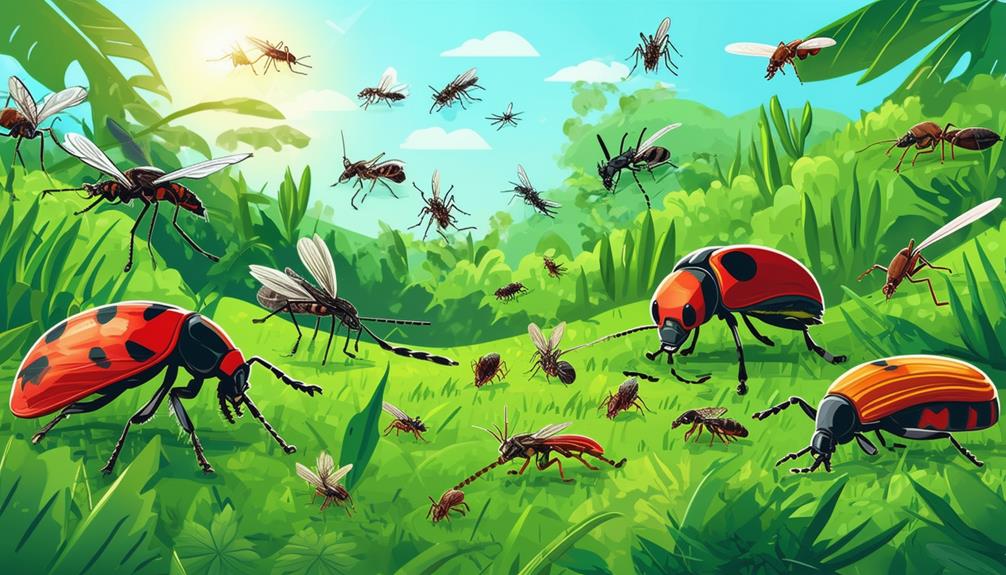Pest control is a critical aspect of maintaining the health and well-being of both human populations and agricultural systems. With the increasing concern about the negative impacts of chemical pesticides on the environment and human health, there has been a growing interest in finding more sustainable and effective methods of pest control.
Among the various approaches available, Integrated Pest Management (IPM) has emerged as the most common and widely accepted method for pest control.
IPM is a comprehensive and systematic approach that combines multiple pest control strategies to minimize the use of chemical pesticides while effectively managing pest populations. This approach focuses on the principles of prevention, monitoring, and control, aiming to reduce pest damage while minimizing risks to human health and the environment.
By integrating various pest control methods such as cultural practices, biological control, and targeted chemical treatments, IPM provides a holistic and sustainable approach to pest management.
This article will explore the different components of IPM and discuss their effectiveness in controlling pests while ensuring the safety and well-being of both humans and the environment.
Integrated Pest Management (IPM): An Overview
Integrated Pest Management (IPM) is a comprehensive approach to pest control that incorporates multiple strategies such as biological control, cultural practices, and chemical interventions to minimize the use of pesticides and promote sustainable pest management.
Integrated pest management strategies aim to control pests by integrating various methods rather than relying solely on chemical pesticides. These strategies involve a combination of preventive measures, monitoring and identification of pests, and appropriate control measures.
One of the benefits of integrated pest management is its effectiveness in reducing the reliance on chemical pesticides. By incorporating cultural practices such as crop rotation, proper sanitation, and habitat modification, farmers can create an environment that is less favorable for pests to thrive. This reduces the need for chemical interventions, which can have negative impacts on the environment and human health.
Additionally, IPM promotes the use of biological control methods, such as the introduction of natural enemies of pests, to regulate pest populations. This approach not only provides effective control but also helps maintain a natural balance in the ecosystem.
Transitioning into the subsequent section about biological control, it is important to note that biological control is a key component of IPM.
Biological Control: A Key Component of IPM
Biological control serves as a vital element in the implementation of Integrated Pest Management (IPM) strategies. It involves the use of natural enemies, such as predators, parasitoids, and pathogens, to control pest populations.
Biological control techniques can be categorized into two main types: conservation and augmentation. Conservation biological control focuses on enhancing the presence and effectiveness of natural enemies already present in the environment. This can be achieved by providing suitable habitats, such as hedgerows or cover crops, that support the natural enemies.
Augmentation biological control, on the other hand, involves the release of natural enemies into the environment to supplement existing populations. This can be done through the mass rearing and release of beneficial organisms.
One of the major advantages of biological control is its environmentally friendly nature. Unlike chemical pesticides, biological control agents are specific to the target pests and do not harm beneficial insects, humans, or the environment. Additionally, biological control is a sustainable approach as it relies on natural processes and organisms already present in the ecosystem.
It can also be cost-effective in the long term, as the establishment of a stable population of natural enemies can help reduce the need for repeated pesticide applications. Moreover, biological control can be integrated with other pest management practices, such as cultural and physical controls, to provide a comprehensive and effective pest management solution.
Transitioning into the subsequent section about cultural practices for pest control, it is important to consider the role of biological control in combination with these practices.
Cultural Practices for Pest Control
Cultural practices for pest control have been embraced by farmers worldwide, showcasing the irony of their effectiveness despite their simplicity. These practices involve modifying the agricultural environment to reduce pest populations and minimize damage to crops. Two common cultural practices used for pest control are composting techniques and crop rotation.
Composting techniques involve the decomposition of organic materials to create nutrient-rich compost. This compost can then be used as a natural fertilizer, promoting healthy plant growth and enhancing the plants’ ability to resist pests and diseases. Composting not only improves soil fertility but also helps to maintain a balanced ecosystem by supporting beneficial organisms that can control pest populations. Additionally, composting reduces the need for synthetic fertilizers, which can have harmful effects on the environment.
Crop rotation is another cultural practice that is widely used for pest control. It involves the systematic rotation of crops in different areas of the farm over multiple growing seasons. This practice disrupts the life cycle of pests, reducing their populations and preventing the buildup of pests that are specific to certain crops. Crop rotation also helps to improve soil health, as different crops have varying nutrient requirements and contribute to the overall fertility of the soil. By implementing crop rotation, farmers can effectively manage pests while maintaining the productivity and sustainability of their farms.
Transitioning into the subsequent section about ‘chemical treatments: when and how to use them,’ it is important to note that while cultural practices for pest control are highly effective, there are situations where chemical treatments may be necessary. Chemical treatments should be used as a last resort when cultural practices are not sufficient to control pest populations. The next section will discuss the appropriate circumstances for using chemical treatments and provide guidelines for their safe and effective application.
Chemical Treatments: When and How to Use Them
Chemical treatments play a significant role in Integrated Pest Management (IPM) programs, providing an effective means of controlling pests.
Before using chemical treatments, it is crucial to consider several factors. These include the target pest, the potential impact on non-target organisms, the persistence of the chemical, and the potential for resistance development.
Additionally, safety measures and regulations should be strictly adhered to when using chemicals to ensure the protection of human health and the environment.
Role of Chemical Treatments in IPM
One prevalent approach in Integrated Pest Management (IPM) involves the utilization of chemical treatments to control pests. Chemical treatments play a vital role in IPM by providing an effective means of reducing pest populations and preventing crop damage.
However, it is important to consider the potential drawbacks and limitations of chemical treatments in order to make informed decisions about their use.
Chemical treatments offer several benefits in pest control. One of the main advantages is their ability to quickly and effectively eliminate pests, minimizing the risk of crop damage. Chemical treatments can target specific pests or groups of pests, allowing for precise control without harming beneficial organisms. Additionally, chemical treatments can be applied in various forms such as sprays, baits, or granules, making them versatile and adaptable to different pest control needs.
Despite their benefits, it is essential to consider alternatives to chemical treatments in IPM. Organic pest control methods, for example, utilize natural substances and biological agents to manage pests. These methods are eco-friendly and do not leave harmful residues in the environment. By incorporating alternative approaches, such as biological control or cultural practices, alongside chemical treatments, growers can create a more sustainable and integrated pest management system.
Considering the potential drawbacks of chemical treatments and the availability of alternatives, it is crucial to carefully evaluate the need for and timing of chemical treatments in IPM. By assessing factors such as pest population levels, crop damage thresholds, and the potential impact on non-target organisms, growers can make informed decisions about when and how to use chemical treatments effectively.
Factors to Consider Before Using Chemical Treatments
Before implementing chemical treatments in Integrated Pest Management (IPM), it is important to carefully evaluate several factors to ensure their appropriate and effective use.
One of the key factors to consider is the environmental impact of the chemicals. Chemical treatments can have detrimental effects on the environment, including the contamination of soil, water, and air. It is crucial to select chemicals that have minimal environmental impact and are specifically formulated for pest control purposes. Additionally, it is essential to consider the potential harm to non-target organisms such as beneficial insects, birds, and mammals. Choosing chemicals that specifically target the pests while minimizing harm to other organisms is important for maintaining biodiversity and ecological balance.
Another factor to consider before using chemical treatments is the potential for resistance development in pests. Pests can develop resistance to certain chemicals over time, rendering them ineffective. To prevent or delay resistance, it is crucial to rotate the use of different chemical classes or employ a mixture of active ingredients with different modes of action. This approach reduces the likelihood of pests developing resistance and ensures the long-term effectiveness of chemical treatments.
Furthermore, it is essential to consider alternative methods of pest control before resorting to chemical treatments. Integrated Pest Management (IPM) emphasizes the use of multiple tactics to manage pests, including cultural, mechanical, and biological control methods. By incorporating these alternative methods, chemical treatments can be minimized, reducing potential environmental risks and the reliance on pesticides.
Transitioning to the subsequent section about ‘safety measures and regulations for chemical use,’ it is important to understand the necessary precautions and guidelines in place to ensure the safe and responsible use of chemicals in pest control.
Safety Measures and Regulations for Chemical Use
To ensure the safe and responsible use of chemicals in pest management, strict safety measures and regulations have been implemented to protect both human health and the environment. Safety precautions are essential when handling and applying chemical treatments for pest control. Personal protective equipment, such as gloves, goggles, and masks, should be worn to prevent direct contact with the chemicals. It is also important to follow proper handling and storage procedures to minimize the risk of spills or leaks.
Additionally, education and training programs are available to educate pest control professionals on the safe and effective use of chemicals.
In addition to safety precautions, regulations are in place to minimize the environmental impact of chemical treatments. The use of certain chemicals may be restricted or prohibited in certain areas to protect sensitive ecosystems and wildlife. Chemicals should be used in accordance with label instructions and dosage recommendations to prevent over-application and reduce the potential for environmental contamination. Proper disposal methods for leftover chemicals and empty containers must be followed to prevent pollution and ensure safe disposal.
By adhering to these safety measures and regulations, the potential risks associated with chemical treatments can be minimized, allowing for effective pest management while protecting both human health and the environment.
Moving forward into the subsequent section about implementing an effective integrated pest management (IPM) program, it is important to consider alternative methods of pest control that reduce the reliance on chemical treatments.
Implementing an Effective IPM Program
Implementing an effective Integrated Pest Management (IPM) program is crucial for effective pest control, as it provides a comprehensive approach that combines various pest control strategies to minimize pesticide use while maximizing effectiveness.
IPM focuses on long-term prevention and management of pests, rather than relying solely on the application of pesticides. By integrating multiple pest control methods, IPM offers several benefits.
Firstly, it reduces the reliance on chemical pesticides, which can have harmful effects on human health and the environment. This is achieved through the use of alternative pest control techniques such as biological control, cultural practices, and habitat manipulation.
Secondly, IPM promotes sustainable pest management by minimizing the development of pesticide resistance in pest populations. This is achieved by rotating and diversifying pest control methods, making it more difficult for pests to adapt and become resistant to any single control measure.
To implement an effective IPM program, several steps must be followed. The first step is to conduct a thorough inspection to identify the pest species and assess the extent of the infestation. This information is critical for determining the appropriate control strategies to be employed.
The next step involves setting action thresholds, which are predetermined pest population levels that warrant intervention. Action thresholds ensure that control measures are only implemented when necessary, preventing unnecessary pesticide use.
Once the action thresholds are reached, a combination of pest control methods is deployed. This can include physical methods such as trapping and exclusion, as well as cultural methods like proper sanitation and maintenance practices. Additionally, biological control agents, such as predators and parasites, can be introduced to manage pest populations.
Regular monitoring and record-keeping are essential to evaluate the effectiveness of the IPM program and make necessary adjustments. By following these steps, an IPM program can effectively manage pests while minimizing the risks associated with pesticide use.
Frequently Asked Questions
What are the different types of pests that can be controlled using Integrated Pest Management (IPM)?
Different pests that can be controlled using integrated pest management (IPM) include insects, rodents, and weeds. IPM utilizes various methods such as biological control, cultural practices, and chemical interventions to effectively manage pest populations while minimizing environmental impacts.
Are there any potential drawbacks or limitations to using biological control methods for pest management?
Potential drawbacks and limitations of using biological control methods for pest management include limited effectiveness against certain pests, potential harm to non-target organisms, and the need for continuous monitoring and adjustment of control measures.
Can you provide examples of cultural practices that can be employed for effective pest control?
Cultural practices for effective pest control involve implementing various methods to minimize pest populations. Examples of integrated pest management (IPM) include crop rotation, trap cropping, and providing suitable habitats for beneficial insects to control pests.
How do chemical treatments differ from other methods of pest control, and when is it appropriate to use them?
Chemical treatments, such as insecticides, differ from non-chemical methods of pest control by directly targeting pests’ nervous systems. While non-chemical methods focus on cultural practices, chemical treatments are appropriate when infestations are severe or cultural practices are ineffective.
What are some key factors to consider when implementing an IPM program to ensure its effectiveness?
Key factors to consider when implementing an Integrated Pest Management (IPM) program for effectiveness include thorough pest monitoring, accurate pest identification, setting action thresholds, employing a combination of pest control methods, and regular evaluation and documentation of the program’s outcomes.





